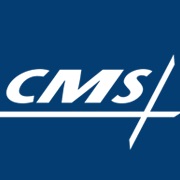CMS Accountable Care Organization Model Targets Dual Eligibles
The Medicare-Medicaid Accountable Care Organization (ACO) Model seeks to partner state Medicaid agencies, accountable care organizations, and healthcare providers.

- On December 15, the Department of Health & Human Services (HHS) announced the creation of the new Medicare-Medicaid Accountable Care Organization (ACO) Model. The model is meant to improve the quality of care and decrease costs of beneficiaries eligible for both Medicare and Medicaid coverage, according to a fact sheet from the Centers for Medicare & Medicaid Services (CMS).

CMS is using the Medicare-Medicaid Accountable Care Organization Model to work with states where ACOs can become responsible for both Medicare and Medicaid costs as well as the quality of care among dual-eligible beneficiaries.
This program aligns with CMS goals based on paying for quality instead of quantity. CMS seeks to transfer 50 percent of their claim payments toward value-based, alternative payment models by the end of 2018.
The new accountable care organization model will cover the cost of Medicare Part A, Part B, and Medicaid. States will be able to choose whether to begin participating in the program on January 1, 2018, January 1, 2019, or January 1, 2020.
“The Medicare-Medicaid ACO Model is open to all states and the District of Columbia that have a sufficient number of Medicare-Medicaid enrollees in fee-for-service Medicare and Medicaid. CMS will enter into Participation Agreements with up to six states, with preference given to states with low Medicare ACO saturation,” the CMS fact sheet stated. “CMS will work with states to determine the appropriate Medicaid authority needed for their desired approach.”
CMS has targeted dual-eligible beneficiaries through this new ACO model because these patients are often “highest-need, highest risk” beneficiaries. The program is designed to allow accountable care organizations already participating in the Medicare Shared Savings Program to enter into arrangements with state Medicaid agencies and CMS.
The outcomes from accountable care organizations tend to vary, as seen from the Medicare Shared Savings Program and the Pioneer ACO Model. For example, Pioneer Accountable Care Organizations brought in $96 million in total savings and qualified $68 million in shared savings during their second performance year, according to a CMS fact sheet. However, during the fourth performance year, Pioneer ACOs brought in little more than $37 million.
There has been some lack of consistency when it comes to savings from the Pioneer ACO model and it seems to take more time to garner cost savings from the Medicare Shared Savings Program. For instance, 2015 results from CMS show that 37 percent of accountable care organizations that entered the program in 2012 qualified for shared savings as compared to 19 percent of ACOs that entered in 2014.
Nonetheless, some positives from the Medicare Shared Savings Program include the $466 million in savings generated across 400 accountable care organizations in 2015. Additionally, 125 ACOs reached their quality benchmarks last year. The results showed an ongoing improvement year-to-year for MSSP accountable care organizations.
“Accountable Care Organization initiatives in Medicare continue to grow and achieve positive results in providing better care and health outcomes while spending taxpayer dollars more wisely,” Dr. Patrick Conway, CMS Principal Deputy Administrator and Chief Medical Officer, said in a public statement. “CMS continues to work and partner with providers across the country to improve the way healthcare is delivered in the United States.”
The American Academy of Family Physicians (AAFP) recommends one area where the Medicare Shared Savings Program may need improvement. The AAFP suggests providing greater support for the primary care space among accountable care organizations. Streamlining data sharing between primary care facilities could also help small medical practices participate more readily with the Medicare Shared Savings Program.
Much like the MSSP, future ACO models for Medicare or Medicaid beneficiaries may also need time to garner greater experience before generating significant cost savings for CMS and healthcare providers.
Dig Deeper:
Key Steps for Payer Success in Accountable Care Organizations
What Are the Benefits of Accountable Care Organizations?
